A Forest Ranger's Story: From Logger to Parataxonomist
“In the past, I went into the forest, cut down valuable trees to make a living. But now, I go into the forest to protect them from people like I used to be. As a reserve warden, I thought I would only do routine work in the forest. I could never imagine presenting my research at a national conference!” Yang Shenpin said.
Born at the foothills of Mt. Gaoligongshan in China’s Yunnan Province, Yang Shenpin has been a warden for a decade at Gaoligongshan National Nature Reserve (GNNR). Before the age of 20, Shenpin worked for a logging company and had never thought about protecting the forest. And by the age of 30, he became a warden patrolling the forest everyday who could never picture himself presenting his work in front of 200 researchers at a national herpetological conference.
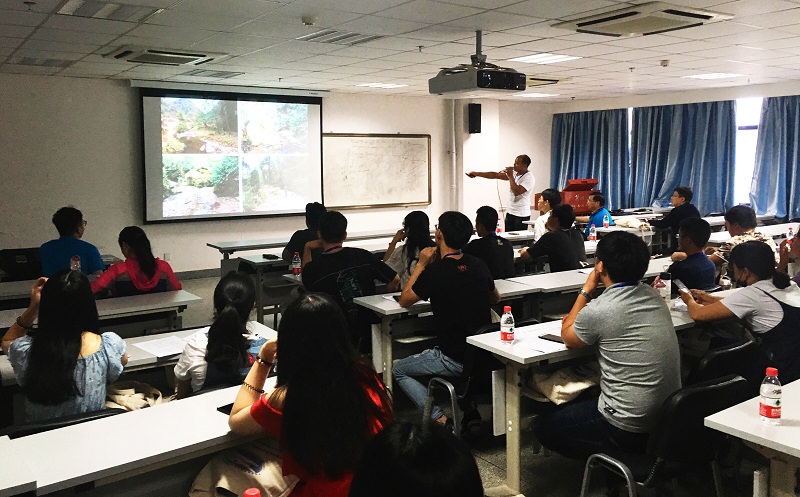
Shenpin’s presentation entitled “Ecological study on Leptobrachium tengchongense”, the new-to-science frog species he helped discovered with KCC staff.
So how did a reserve warden end up doing a presentation at a scientific conference? Kadoorie Conservation China Department (KCC) believes capacity building of local people, especially the training of frontline staff is of utmost important in conservation. By providing learning opportunities to wardens, we hope to instigate their love to nature, and turn them into lifetime nature lovers. Some of them even became local experts or “parataxonomists”, who make significant contribution to scientific studies.
Life as a logger
Shenpin was born in a remote village in Tengchong County adjacent to Myanmar. Like many young fellows in the village, Shenpin found a job at a logging company after he graduated from junior high school in 2004. That company was one of many companies to hire Chinese workers to fell valuable timber from Myanmar, which would be sold in China at a high price. “The Himalayan Yew (Taxus wallichiana) was especially valuable at that time, a good piece of log could fetch tens of thousands of yuan. But a logging team of 4 or 5 local people only got a share of less than two-thousand yuan.” Shenpin vividly remember that during the rainy season in 2005, a severe flash flood took many lives from his village. “Many of my neighbours were killed by the disaster; a family of seven had only one survivor, and a family of six had three remained. If there was no forest destruction, this kind of natural disaster would not have happened at such scale” Shenpin said.
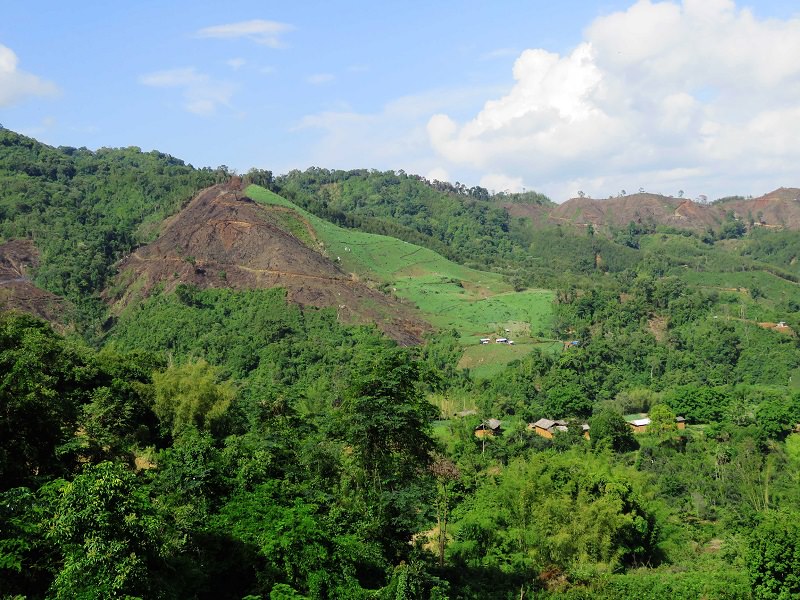
A barren slope in Myanmar
Becoming a warden
In 2007, Shenpin quit his logging job to become a decoration worker. But unfortunately, he lost the job after 10 months, and had not been able to find a stable job. He tried his luck in big cities like Guangdong and Shandong provinces, but was unable to settle down. “City is too noisy. I enjoy the mountains, it is quiet and relaxing. So when I found that GNNR was recruiting, I applied without any hesitation.” In July 2009, Shenpin became a warden at Datang Sub-Station of GNNR. Now, at the age of 30, Shenpin has already been a guardian of the forest for almost a decade.

Shenpin patrolling the forest; wading across torrents is an ordinary task for him
The path to becoming a parataxonomist
Shenpin spent a lot of his childhood days catching frogs and snakes around his village, so he is particularly fond of them, and is keen to take part in biodiversity surveys jointly organized by KCC and GNNR. Shenpin already knew a lot about amphibians and reptiles when he first joined the survey team, and we were impressed by his talent and eagerness to learn, and we saw his potential to become a local herpetologist. Therefore, Shenpin is always invited to participate in our field surveys. Now, Shenpin can identify at least 50 local amphibian and reptile species!
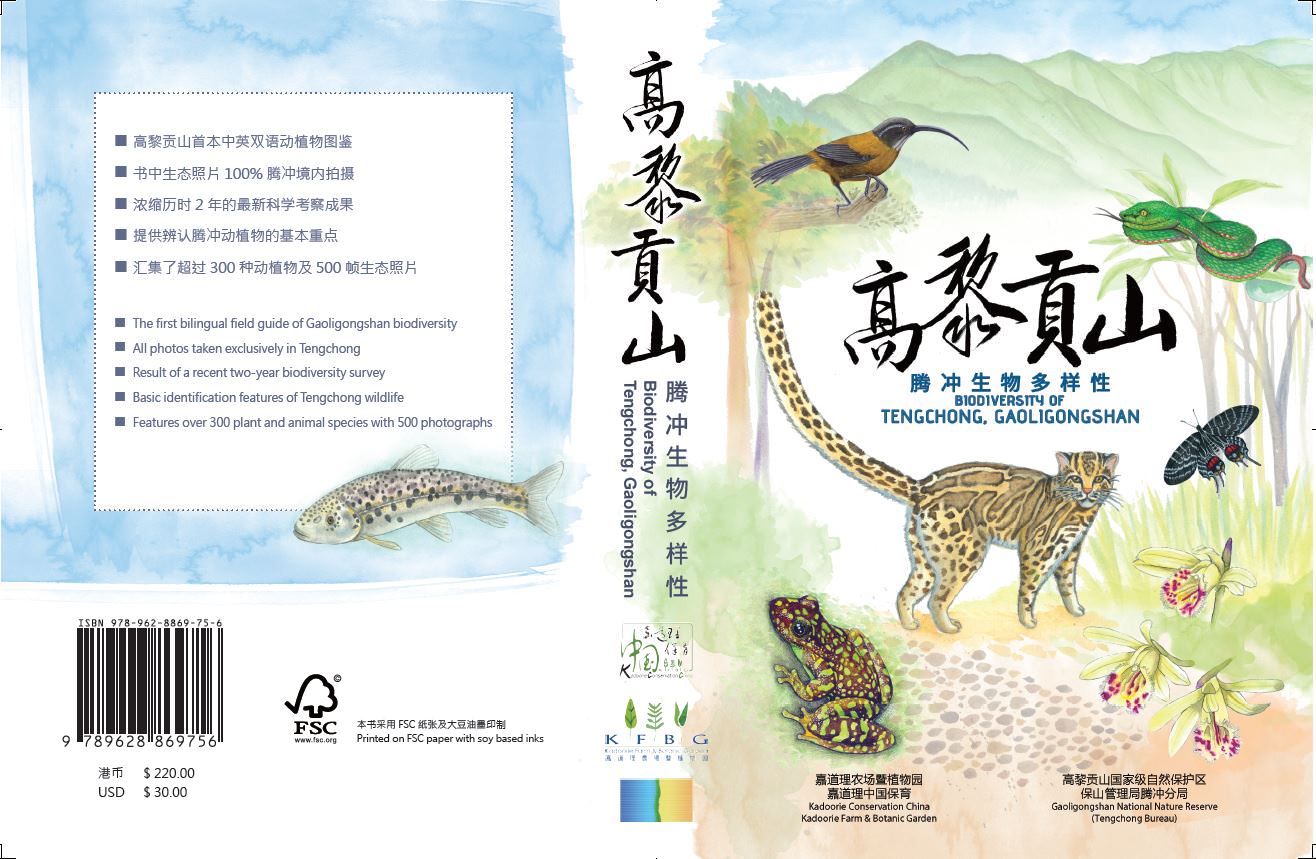
Field guides are very important tools for wardens to improve their knowledge. This pocket guide is a product of KCC and GNNR.
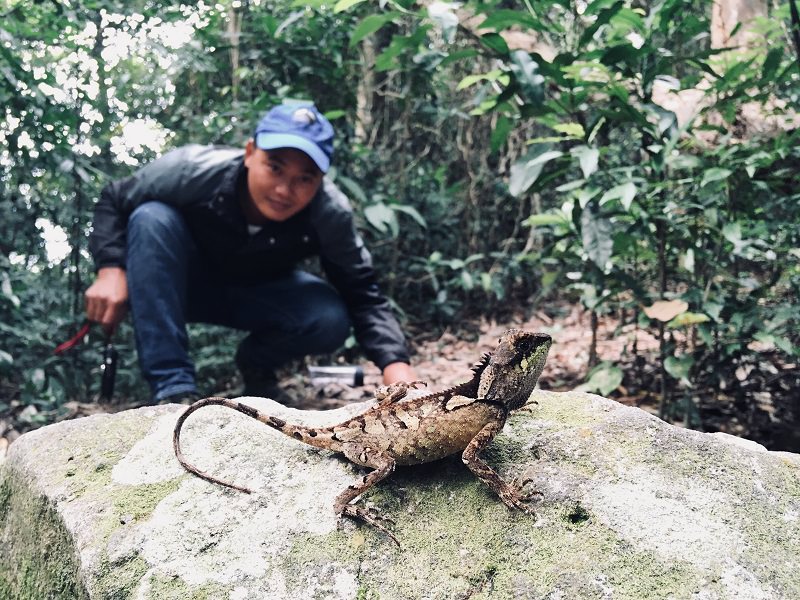
In In 2017, KFBG invited Shenpin to participate in a survey at Bawangling National Nature Reserve in Hainan province.
Part of a team to discover New Species
During a survey, KCC herpetologist Yang Jianhuan heard a frog call that he was unfamiliar with, but he was not able to find it. When discussing with Shenpin, Shenpin recalled encountering a frog with a bizarre appearance, which laid eggs under rocks along the stream. In March 2015, Shenpin led the KCC team to where he saw this frog, this frog was finally found among the debris after careful search, and the whole discovery was filmed by the KFBG film series “Garden in the Sky”. KCC eventually published an article describing this new species and named it the Tengchong spadefoot toad Leptobrachium tengchongense. Undoubtedly, Shenpin played a crucial role in this remarkable scientific discovery.
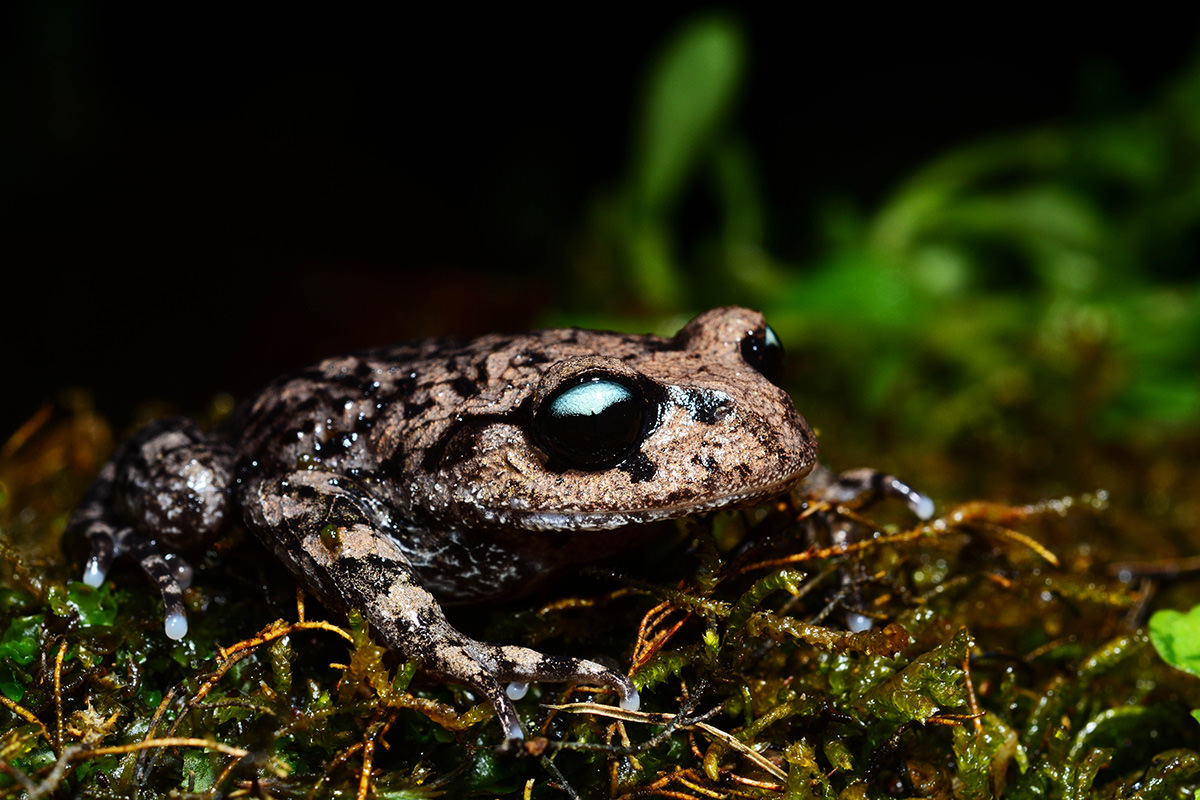
The most distinctive character of the new-to-science frog species, Leptobrachium tengchongense is its light blue upperiris
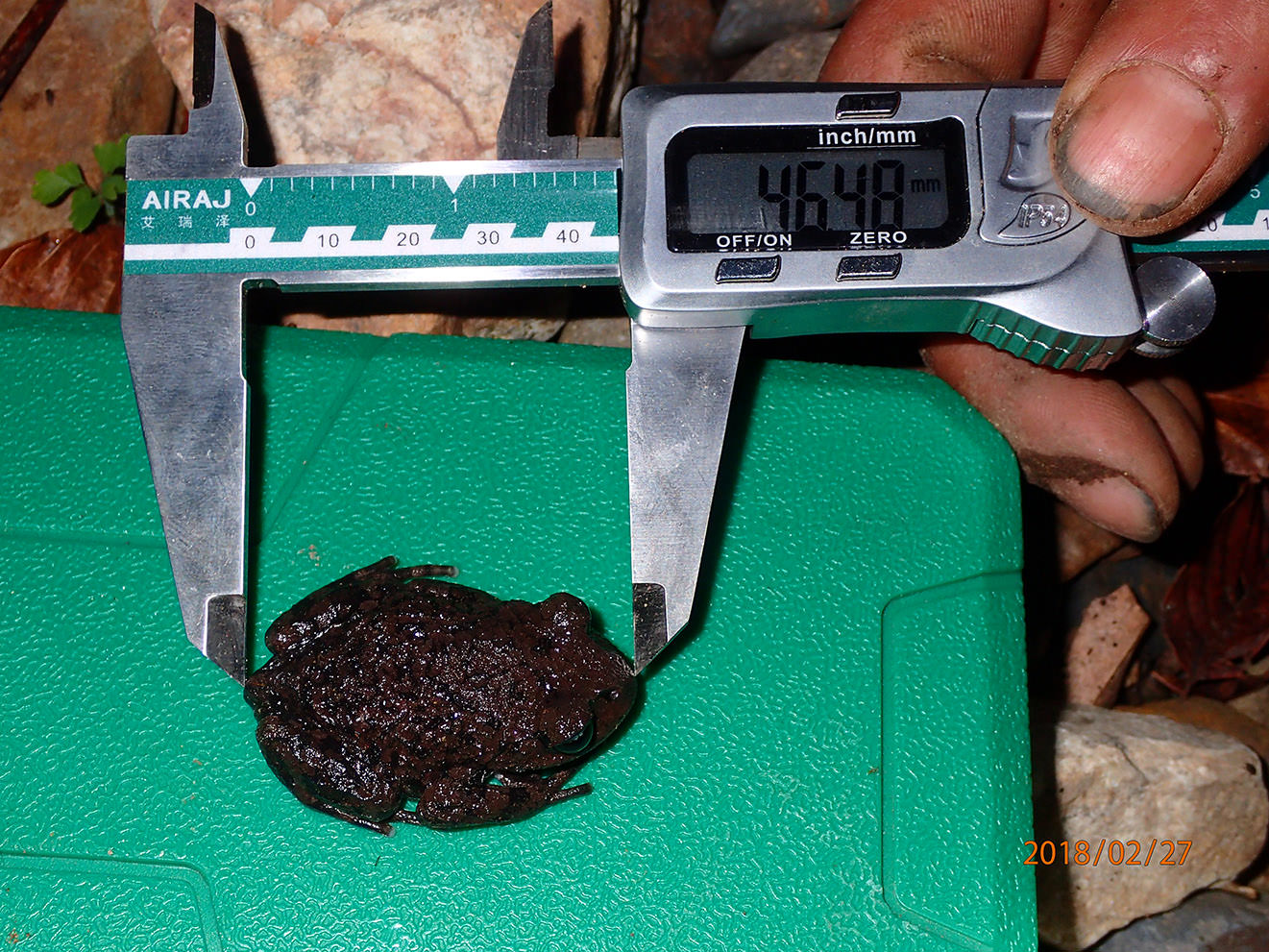
Shenping needs to take morphometric measurements during fieldwork.
The first scientific study
“I was asked by Mentor Yang (the way he called Jianhuan) to conduct an ecological study by myself. I was nervous at first because I had never conducted a scientific research alone! But he gave me guidance all along, and so later I became more confident, and I just wanted to accomplish the task the best I could,” Shenpin said. From February to May 2017 (the breeding season of Leptobrachium tengchongense), Shenpin went into the forest every three days to conduct fieldwork from evening until midnight.
Fruitful achievements
After four months of hard work, Shenpin collected lots of useful data and his study was highly recognised by his superior and KCC, and he was sponsored by KCC to present his work at the conference of Chinese Herpetological Society. He was excited but felt the pressure at the same time. “I was nervous because it was the first time for me to deliver a presentation in a national scientific conference.” He started to prepare for the presentation one month in advance, “I was quite concerned that every time I practiced my talk with Mentor Yang via the phone, I ran out of time. I am grateful that he was really patient to help improve my presentation and building my confidence. But I did not do so well in the Q&A session, and I often reflect on what better answers that I should have given. Anyway, it was a valuable experience for me indeed.” Shenpin remembered the conference vividly, and he is keen to improve further with this experience.
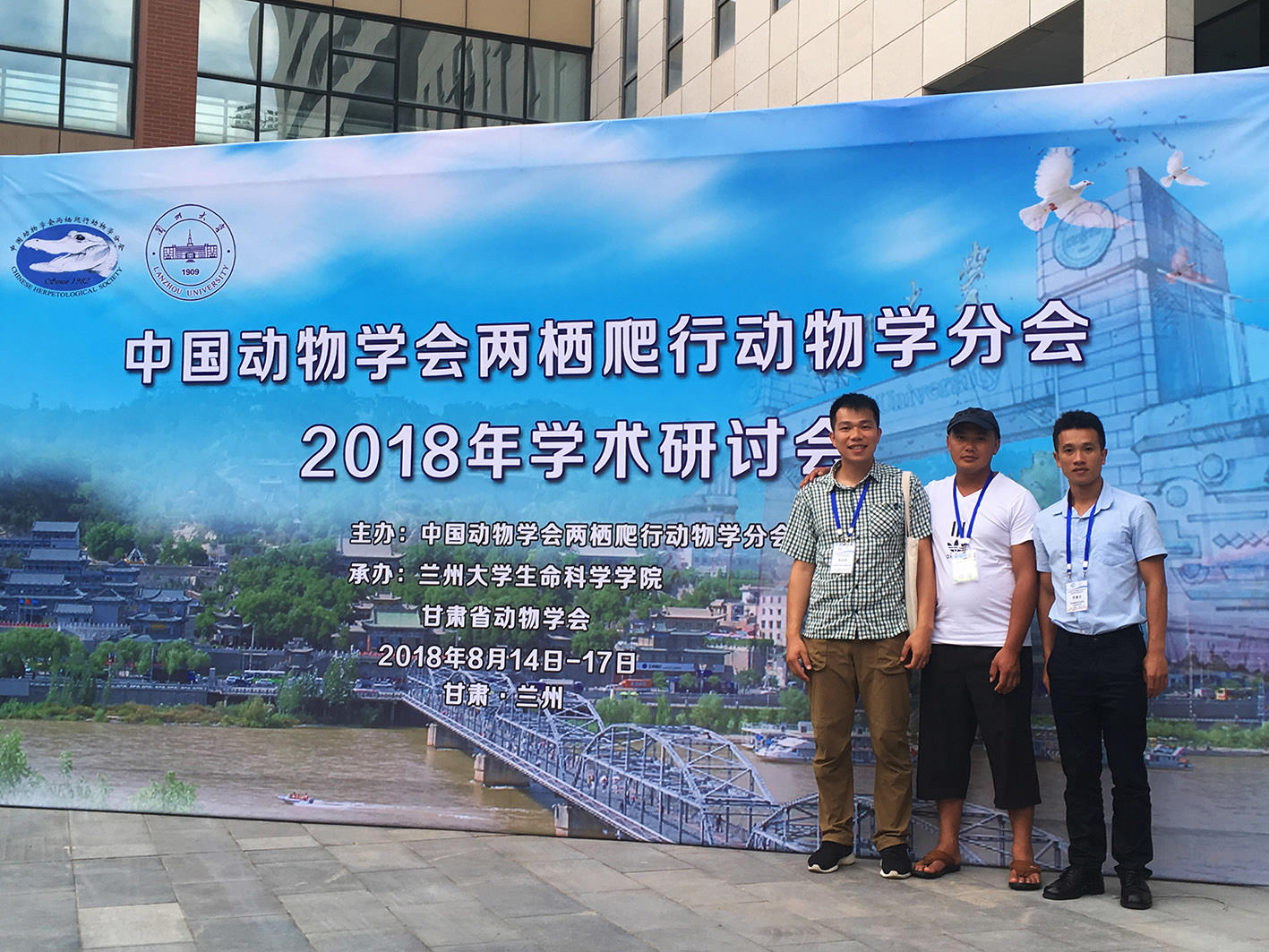
Jianhuan (left) of KCC and Shenpin (middle), together with another KFBG-sponsored warden from Hainan Yinggeling Nature Reserve (right) at the conference of Chinese Herpetological Society
Setting an Example
Now, he is proud to have set an example for his 6-year-old son. “I kept my field guides safe in a drawer, but my son keeps digging them out and asking me where he could find these animals. Once, he heard a special call from the paddy field at night, he urged me to bring him to search for it. We brought our torches and found a frog. My son was so excited for his first discovery, and has been urging me for more explorations ever since…”
Field staff are the first to collect field data. Apart from routine patrolling and providing support to researchers, wardens could potentially become researchers themselves if they were given opportunities to develop their skills. Therefore, we highly recommend nature reserve managers and other research institutes to provide more capacity building opportunities to wardens to make contribution to scientific research.
Read more:
Yang, J. H., Wang, Y. Y., Chen, G. L., & Rao, D. Q. (2016) A new species of the genus Leptolalax (Anura: Megophryidae) from Mt. Gaoligongshan of western Yunnan Province, China. Zootaxa 4088(3): 379-394.

